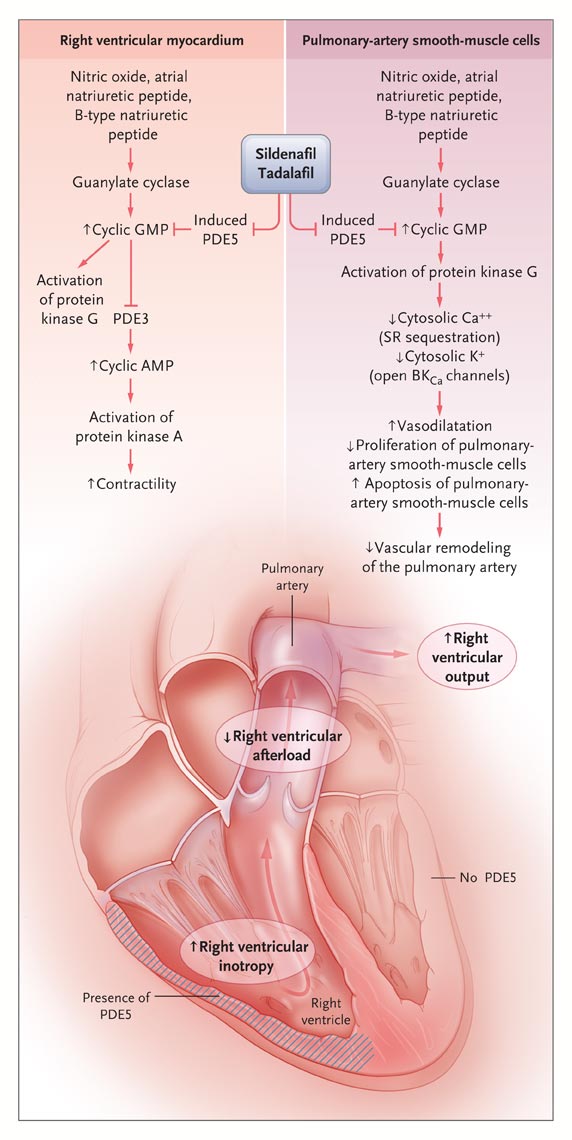資料來源:nejm Volume 361:1864-1871
The combined effect of phosphodiesterase type 5 inhibitors on both the right ventricle and the pulmonary artery
(i.e., increasing right ventricular inotropy and decreasing right ventricular afterload) may be more advantageous than drugs that affect only the pulmonary artery. Because PKG is much less abundant in the myocardium than in the vasculature, and because PKG activity is further decreased in right ventricular hypertrophy, the main effect of phosphodiesterase type 5 inhibitors is cyclic guanosine monophosphate–mediated inhibition of protein kinase A (a milrinone-like effect that increases right ventricular contractility). In contrast, in pulmonary-artery smooth-muscle cells, the effects of phosphodiesterase type 5 inhibitors are mediated by PKG and its multiple targets, leading to vasodilatation, reduced cell proliferation, and increased apoptosis. These combined effects lower the pulmonary vascular resistance. BKCa denotes the large conductance calcium-sensitive potassium channel, GMP guanosine monophosphate, PDE3 phosphodiesterase type 3, PDE5 phosphodiesterase type 5, and SR sarcoplasmic reticulum

Therapeutic and Adverse Effects of Sildenafil in Pulmonary Arterial Hypertension.

The beneficial and harmful effects of sildenafil can be predicted on the basis of the tissue distribution of its target enzyme, phosphodiesterase type 5, and its off-target effects on some other phosphodiesterases. The preferential activity of sildenafil on penile cavernosal muscle and arteries and the pulmonary circulation is high, reflecting the high basal expression of phosphodiesterase type 5 in these tissues. In pulmonary arterial hypertension, phosphodiesterase type 5 expression is induced in the pulmonary vasculature, with new expression of phosphodiesterase type 5 in the hypertrophied right ventricular myocyte, allowing sildenafil to selectively target the right ventricle and pulmonary circulation in a beneficial and relatively selective manner. Sildenafil can directly inhibit retinal phosphodiesterase type 6, altering color vision, and it can indirectly inhibit right ventricular phosphodiesterase type 3, enhancing contractility. The adverse effects listed on the left, which are those most commonly reported in clinical trials and postmarketing studies, reflect cyclic guanosine monophosphate–mediated effects on systemic vascular and other types of muscle. PDE1 denotes phosphodiesterase type 1, PDE3 phosphodiesterase type 3, PDE5 phosphodiesterase type 5, and PDE6 phosphodiesterase type 6.





 留言列表
留言列表
 線上藥物查詢
線上藥物查詢 